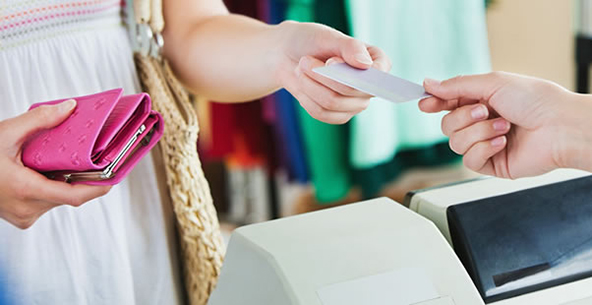Credit Card Acceptance When the Terminal Is Down

Store-front merchants are often faced with situations where their point-of-sale (POS) terminal cannot read the customer’s card stripe or they cannot obtain an authorization for the transaction. The merchant needs to develop a process for handling such incidents and train the staff adequately, so that whenever they occur, the person operating the terminal knows exactly what needs to be done and can resolve the issue quickly. Remember that your customer is waiting while you are trying to work out the problem and will appreciate a prompt solution.
Typically, POS terminals cannot read credit card magnetic stripes for one of three reasons:
- The terminal’s magnetic stripe reader is damaged, causing it to not function properly.
- The card is not swiped through the reader correctly.
- The card’s magnetic stripe is damaged or demagnetized. Keep in mind that damage to the card may happen by accident, but it may also be a sign that the card is counterfeit or has been tampered with.
Whatever the cause, when the terminal is not reading the card’s information, the merchant should do one of the following:
- Check the terminal to make sure that it is in a working order and that the cardholder is swiping the card correctly. Most terminals show the correct way of swiping a card through the reader, yet some customers may not be paying attention, so you would need to provide some guidance.
- If the terminal is operational, examine the card to make sure that it has not been altered in any way and it is valid. Check the card’s security features, paying close attention to the account number and the card security codes, as well as the hologram. If any of these features looks as if it has been altered, you would probably be well advised to make a Code 10 call. The magnetic stripe may have been damaged while the other features were being tampered with.
- If the card cannot be read because of an issue with the magnetic stripe, you should follow your store’s established procedures. Most often, the decision is to override the swiping procedure and to key-enter the payment data. Alternatively, a call to your payment processor’s authorization center may do the job.
- Whether the transaction is key-entered or voice authorized, you should take a manual imprint of the front of the card to prove that the card was present during the transaction. The imprint should be made on the sales receipt or on a separate sales receipt, which would also need to be signed by the customer. The card imprint protects the merchant from chargebacks in a case of a fraud.
Key-entered credit card transactions are perfectly acceptable, however a significant disadvantage proves to be the fact that certain security features, such as the expiration date and the card security code, are unavailable, which makes them prone to higher levels of fraud and chargebacks. This is the reason why your processor will charge you higher processing rates for keyed transactions than for swiped ones.
Image credit: Dimokratianews.gr.


